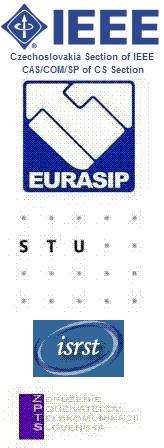
Keynote speakers
Measurements of MIMO HSDPA and WiMAX transmissions
 |
Univ. prof. Dr.techn. Markus RuppVienna University of Technology, AustriaPresentation |
Modern wireless communication is based on ever-more-complex algorithms to exploit the characteristics of the radio channel in an ingenious way. Its performance is more and more frequently evaluated by the use of simulations -- a remarkable benchmark. Nevertheless, at the end of the day, it is not the simulated link capacity that counts but the throughput actually achieved by a system. HSDPA and WiMAX are based on MIMO, feedback, and different modulation standards -- three properties that make it especially challenging to measure the performance of their physical layers with reasonable effort. Nonetheless, it can be done. If cleverly used, a testbed can combine the strengths of Matlab simulation with the utilization of a real physical channel, in a time, cost, and manpower-efficient manner. Of course, such an approach does not come with real-time capability, but that is actually not needed to evaluate the average throughput, as the techniques and results presented in this talk show.
All-IP, fixed-mobile convergence, NGN, bit pipes, service platform,… how does IMS fit into all this?
 |
Dr. Antonio CuevasRechenzentrum, Universität Stuttgart, GermanyPresentation |
We are facing a major revolution in Telecommunications. There are hard tensions in the business arena, with a convergence of the different business models and a coexistence of all of them. However, a common direction exists: a migration to a universal IP network, supporting any access technology, fixed or wireless and any service. Service platforms are a key part in this revolution. They enable the "semi-walled garden" business model, cheered by the network operators. IMS is a service platform designed by the 3GPP and adopting open IETF standards, among them the IPv6 protocol. As such, it should be accessible by any mean, fixed, mobile, wired, and wireless. Because of this, IMS is gaining its place to be the next-generation networks service platform. IMS has attracted strong interest both by the scientific and industry communities. Still few IMS skilled professionals exist.
Multiview Video Coding for Three-Dimensional Multimedia Services
 |
prof. Yo-Sung HoGwangju Institute of Science and Technology, Korea |
In recent years, various multimedia services have become available and the demand for realistic multimedia systems is growing rapidly. A number of three-dimensional (3D) video technologies, such as holography, two-view stereoscopic system with special glasses, 3D wide screen cinema, and multi-view video have been studied. Among them, multi-view video coding (MVC) is the key technology for various applications including free-viewpoint video (FVV), free-viewpoint television (FVT), 3DTV, immersive teleconference, and surveillance systems. The traditional video is a two-dimensional (2D) medium and only provides a passive way for viewers to observe the scene. However, MVC can offer arbitrary viewpoints of dynamic scenes and thus allow more natural and realistic video. The multi-view video includes multi-viewpoint video sequences captured by multiple cameras at the same time, but at different positions. Because of the increased number of cameras, the multi-view video contains a huge amount of data. Since this system has serious limitations on information distribution applications, such as broadcasting, network streaming services, and other commercial applications, we need to compress the multi-view sequence efficiently without sacrificing visual quality significantly. In this keynote speech, we are going to cover both the basics and the current state-of-the-art technologies for multi-view video coding.
Next Generation of Multimedia Services – NGN based IPTV architecture with or without IMS?
Eugen MikoczySlovak Telekom, Slovakia |
The digital television provided by broadcasters has originally started as terrestrial or satellite digital television several years ago. Deployments of digital television by Telco providers known as the Internet Protocol based Television (IPTV) have been enabled only few years ago mainly because of new types of broadband access networks and new advance video coding technologies. But can IPTV concept provide much more as traditional broadcasted digital TV for example interactivity, mobility, blending with communication services or personalization as is promised? What is the actual industry state of art in IPTV technologies and could be IPTV integrated in future as part of Next Generation Networks (NGN)? NGN have been considered as long term vision of telecom industry how to develop unified service architecture using multi-service concept. Can be all NGN services (including TV-like services) provided and controlled over single common service control platform/mechanisms (e.g. based on IMS) really independently from any access technology? Actually, industry and also standardization bodies are discussing these questions and working on the evolution of Next Generation Network platforms to support also IPTV services. We will briefly presents the current standardization efforts on IPTV platforms and provide outlook about possible migration path from current IPTV solutions towards NGN based IPTV platforms. There exist at least tree main architecture concepts which will be compared: NGN non-IMS solution, IMS based IPTV and converged NGN IPTV architecture.